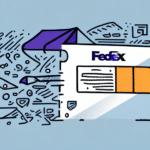Importance of Insuring FedEx Packages
Shipping items with FedEx offers convenience and reliability, but unforeseen events can still occur during transit. Insuring your FedEx packages is crucial for several reasons:
- Protection of Investment: Insurance safeguards the monetary value of your package. If your package is lost or damaged, you are eligible for reimbursement, ensuring that you do not incur a financial loss.
- Peace of Mind: Knowing that your valuable or fragile items are insured allows you to ship with confidence, reducing anxiety about potential mishaps.
- Expedited Claims Process: In the event of loss or damage, having insurance can speed up the claims process, allowing you to receive compensation more quickly.
- Preventing Disputes: Insurance provides a clear framework for reimbursement, helping to avoid conflicts with recipients if issues arise during shipping.
Types of FedEx Package Insurance
FedEx offers two primary types of insurance coverage for packages:
Declared Value Coverage
This is the standard insurance option provided by FedEx. It covers the declared value of your package up to $100 at no additional cost. If your package’s value exceeds $100, you can purchase additional coverage up to $50,000. This option is suitable for most shipments, including electronics, clothing, and other consumer goods.
Declared Value Exception
Designed for items of significant value, such as antiques, fine art, and high-value electronics, the Declared Value Exception offers tailored coverage with specific terms and conditions. It's essential to review these terms carefully and provide necessary documentation, like receipts or appraisals, to validate the item's value.
Additional Protection Options
For enhanced security, consider using FedEx’s Signature Required service. This requires a recipient’s signature upon delivery, ensuring that the package reaches the intended individual and reducing the risk of theft or loss.
Determining Package Value for Insurance
Accurately determining the value of your package is essential for appropriate insurance coverage:
- Item Cost: The primary value is the cost of the item being shipped. Ensure you use the purchase price or an accurate replacement cost.
- Additional Expenses: Include any extra costs incurred, such as shipping fees, taxes, and handling charges.
- Professional Appraisal: For high-value items, obtaining a professional appraisal can provide a precise valuation, which is often required for insurance claims.
For more detailed guidance, refer to the ShipScience Insurance Guide.
Preparing to Insure Your FedEx Package
Before insuring your package, follow these essential steps to ensure eligibility and maximize coverage:
Eligibility Check
Not all items qualify for insurance. Items such as perishable goods, live animals, and hazardous materials may be excluded. Verify FedEx’s insurance policies to confirm eligibility.
Packing and Labeling
Proper packaging is vital to prevent damage during transit. Use sturdy materials and secure packing methods. Accurate labeling ensures that FedEx can handle your package appropriately, reducing the risk of loss or misrouting.
Assessing Package Value
Evaluate the total value of the contents. For high-value items, consider insuring for the full amount to ensure complete coverage.
Research Insurance Options
FedEx provides various insurance plans with different coverage limits and premiums. Analyze the terms and select the plan that best fits your needs and budget.
Purchasing and Choosing the Right Insurance Plan
Selecting the appropriate insurance plan involves several considerations:
Evaluating Package Value
The higher the value of your package, the more comprehensive your insurance should be. Balance the level of coverage with the cost to ensure it remains economical.
Understanding Policy Terms
Read the fine print of any insurance policy to understand limitations and exclusions. Pay attention to factors like international shipping restrictions and coverage caps for specific items.
Purchasing Options
You can purchase insurance either online when creating your shipping label or in person at a FedEx location. When buying online, simply select the desired insurance option and enter your package’s value.
Cost Considerations
The insurance premium varies based on the package’s value. For example, insuring a package valued at $500 will cost more than one valued at $100. Assess whether the cost is justified by the value and importance of the contents.
For comprehensive plans and quotes, visit the ShipScience Insurance Options page.
Handling Claims for Lost or Damaged Packages
In the unfortunate event that your insured package is lost or damaged, prompt action is essential:
Filing a Claim
Claims can be initiated online, by phone, or in person at a FedEx location. Ensure you have all necessary documents, such as the shipping label, invoice, and proof of the item's value.
Documentation Requirements
Provide comprehensive documentation to support your claim. This includes photographs of the damaged package, receipts, and any correspondence related to the shipment.
Claim Processing Time
Generally, FedEx processes claims within 10 business days. However, more complex cases may take longer. Staying in communication with your claims representative can help expedite the process.
International Claims
If shipping internationally, be aware that claim procedures might vary by country. Familiarize yourself with the specific requirements for the destination country to ensure a smooth claims process.
For detailed steps on filing a claim, refer to the ShipScience Claims Process.
Tips for Getting the Best Rates on FedEx Package Insurance
Maximize your insurance coverage while minimizing costs with these strategies:
- Secure Packaging: Invest in high-quality packing materials to reduce the likelihood of damage, potentially lowering your insurance premiums.
- Bundle Shipments: Shipping multiple items together can sometimes qualify you for discounted insurance rates.
- Regular Review: Analyze your shipping patterns and insurance claims history to identify opportunities for cost savings.
- Appropriate Coverage: Only insure items that hold significant value to avoid unnecessary expenses on low-value shipments.
Implementing these tips can help you maintain optimal insurance coverage without incurring excessive costs.
Common Causes of Package Loss or Damage
Understanding the primary reasons packages get lost or damaged can help you take preventive measures:
- Routing Errors: Mistakes in the transportation network can result in misrouted packages.
- Extreme Weather: Severe weather conditions like hurricanes, floods, or snowstorms can disrupt shipping schedules and damage packages.
- Handling Accidents: Rough handling during loading, unloading, or transit can lead to package damage.
- Theft: Packages, especially high-value items, can be targets for theft during transit or delivery.
While insurance cannot prevent these issues, being aware of them allows you to take steps to mitigate risks.
Conclusion
Insuring your FedEx packages is a vital step in protecting your valuable shipments against potential loss or damage. By understanding the types of insurance available, accurately determining package value, and following best practices for packing and claims, you can ensure that your packages are secure and that you are adequately compensated in case of any issues.
For more information and resources, visit the ShipScience website.






















